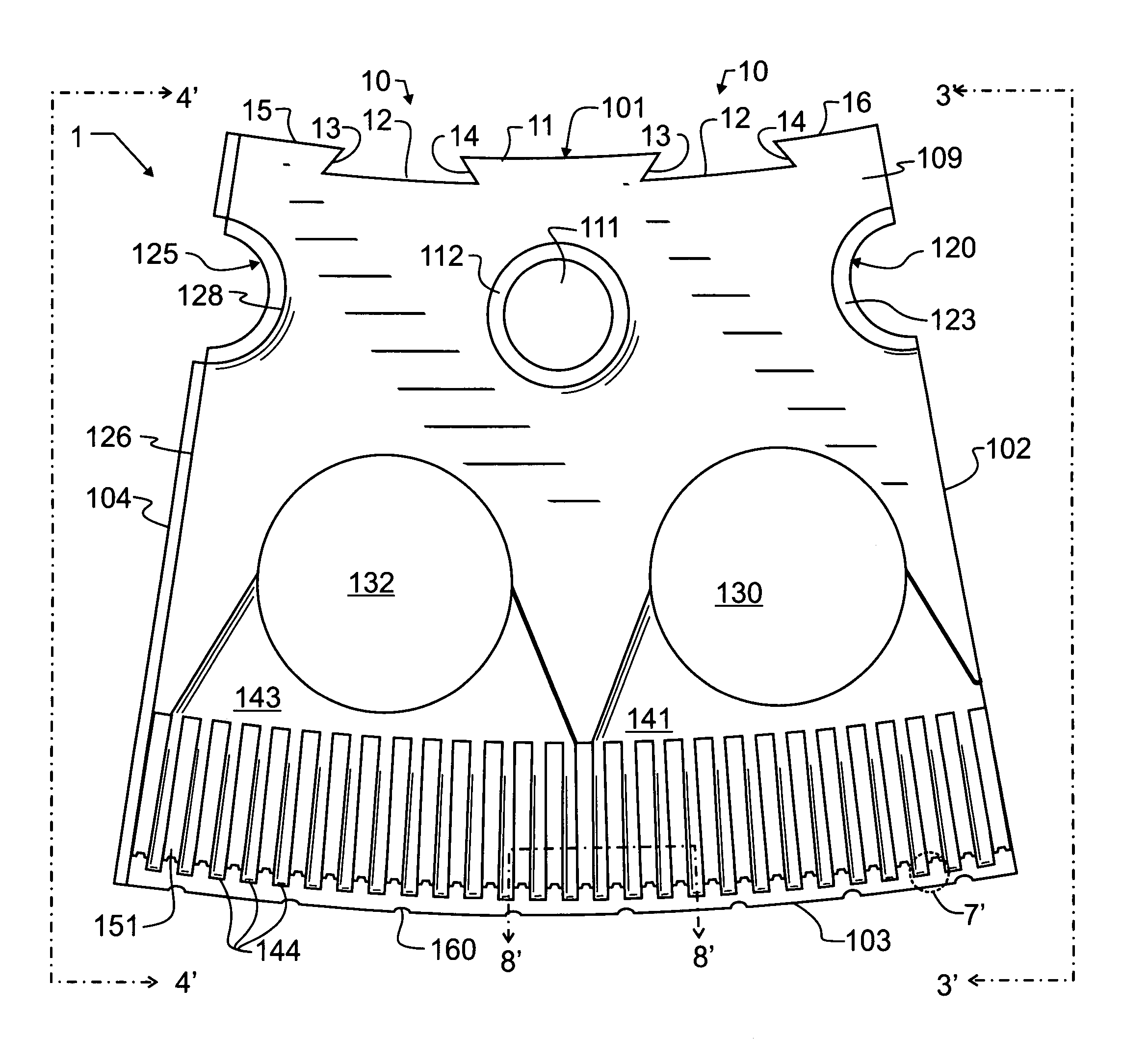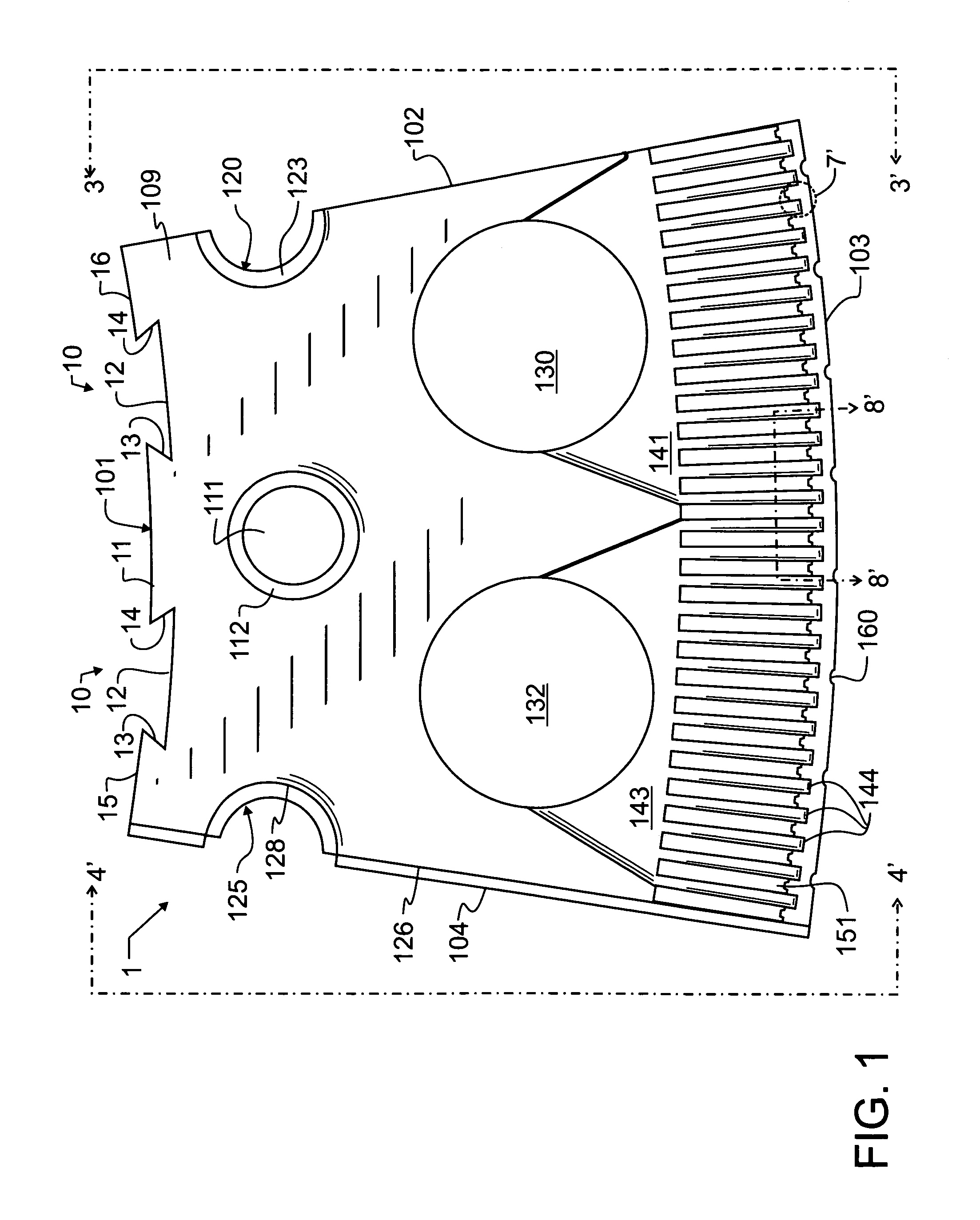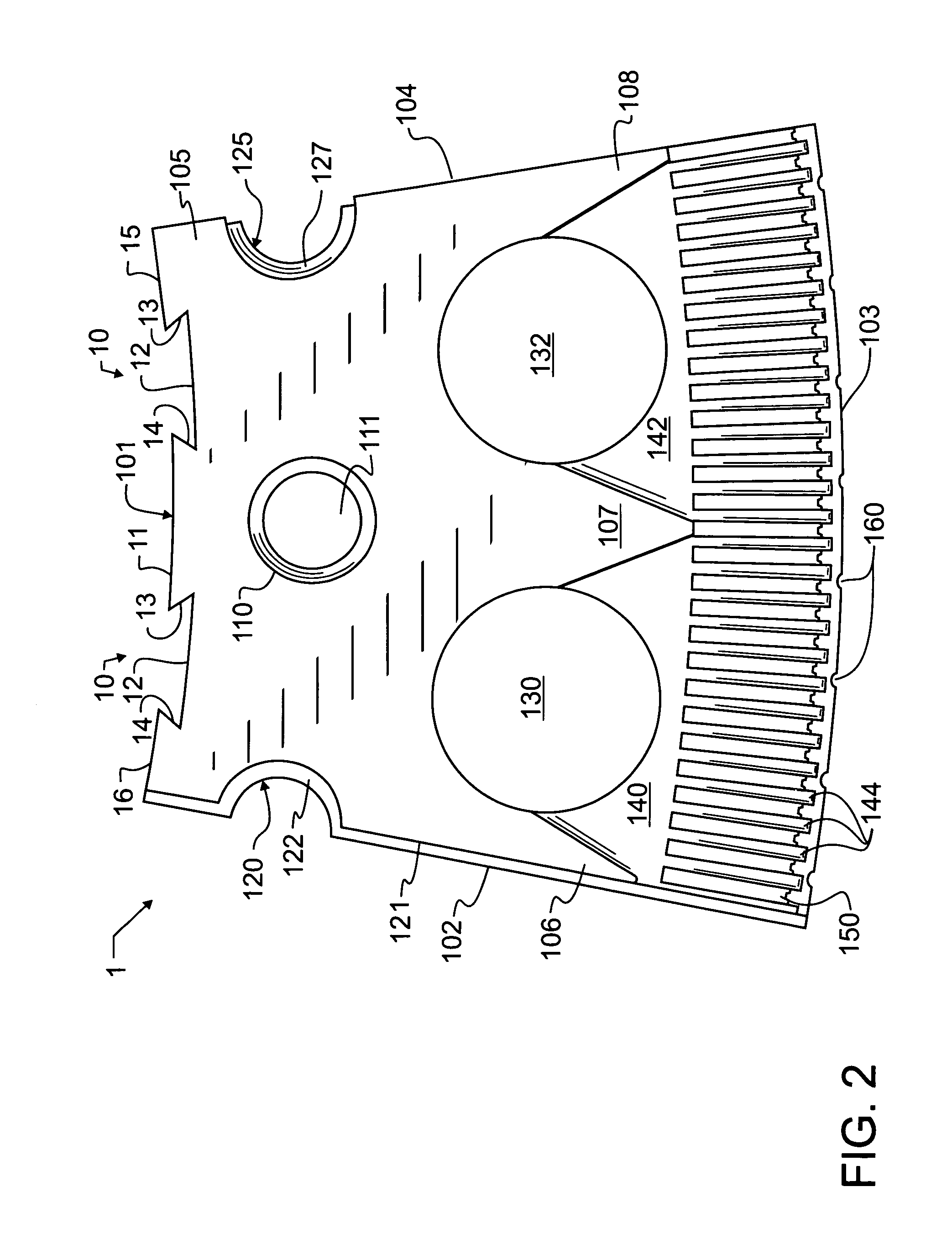Apparatus for shaping and perforating a plastic film
a technology of plastic film and perforation, which is applied in the field of plastic article shaping apparatus, can solve the problems of little force applied to the mold, mold disposed to erode much, and little flexibility in the geometry of the pattern to be formed, and achieve the effect of increasing mechanical strength
- Summary
- Abstract
- Description
- Claims
- Application Information
AI Technical Summary
Benefits of technology
Problems solved by technology
Method used
Image
Examples
Embodiment Construction
[0029]In accord with the teachings of the present invention, and to illustrate the concepts encompassed therein, preferred embodiment single mold segment 1 is illustrated in FIGS. 1–4 and 7. A preferred embodiment roll 200 which combines a plurality of adjacent and angularly offset circumferential rings 201, each circumferential ring 201 made up of a plurality of like single mold segments 1, is illustrated in FIGS. 5, 6 and 8.
[0030]Segment 1 has a first major planar surface 109 forming a first face and a second parallel major planar surface 105 forming a second opposed face. Central edge 101 forms a first minor surface bounding mold segment 1, and includes several trapezoidal notches 10 therein, described in greater detail herein below. Exterior edge 103 forms a second minor surface, and composite edges 102, 121 and 104, 126 form the third and fourth minor surfaces, respectively. These four minor surfaces together with the two major surfaces 105, 109 generally define the exterior sp...
PUM
| Property | Measurement | Unit |
|---|---|---|
| pressure | aaaaa | aaaaa |
| circumference | aaaaa | aaaaa |
| thickness | aaaaa | aaaaa |
Abstract
Description
Claims
Application Information
 Login to View More
Login to View More - R&D
- Intellectual Property
- Life Sciences
- Materials
- Tech Scout
- Unparalleled Data Quality
- Higher Quality Content
- 60% Fewer Hallucinations
Browse by: Latest US Patents, China's latest patents, Technical Efficacy Thesaurus, Application Domain, Technology Topic, Popular Technical Reports.
© 2025 PatSnap. All rights reserved.Legal|Privacy policy|Modern Slavery Act Transparency Statement|Sitemap|About US| Contact US: help@patsnap.com



